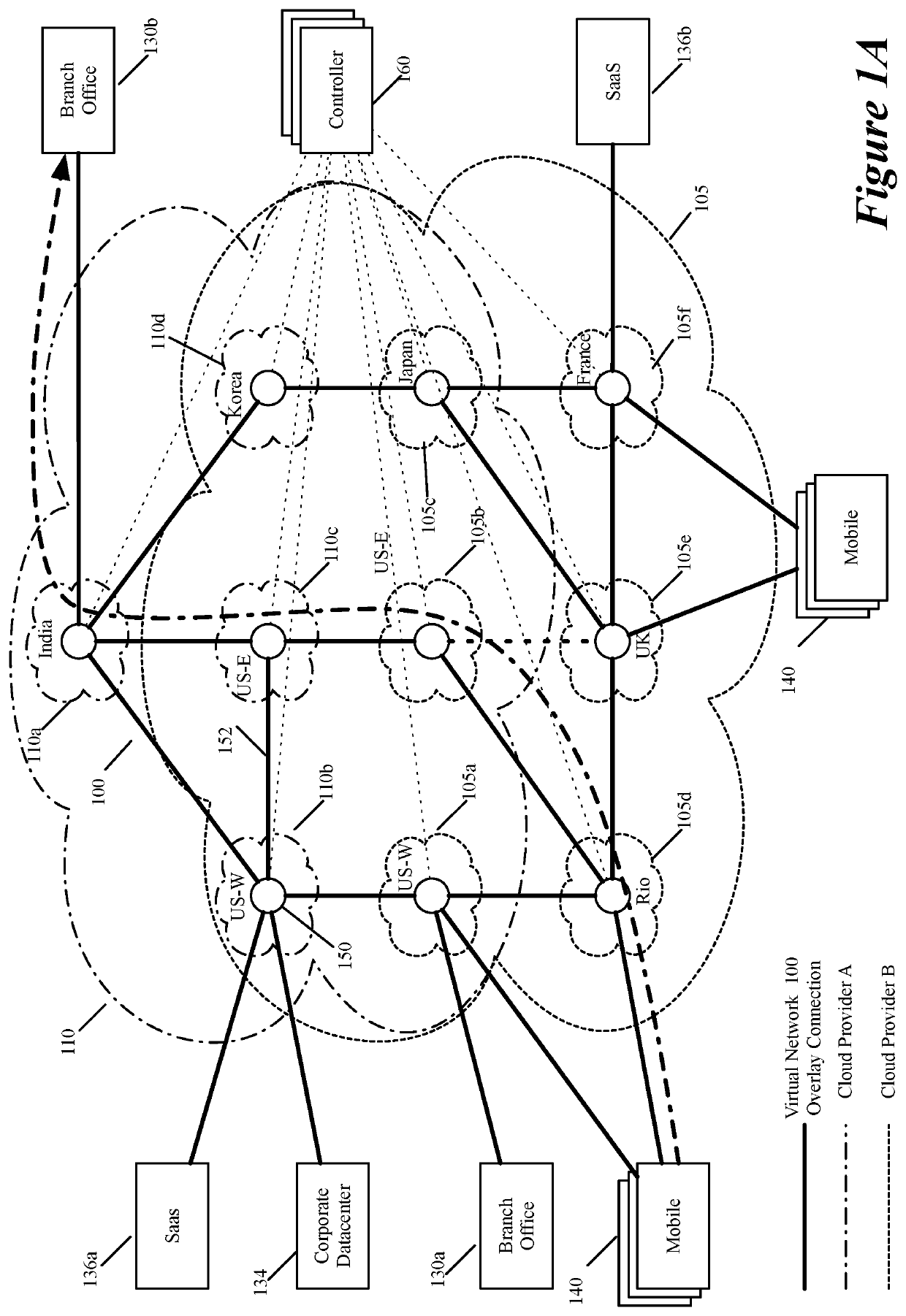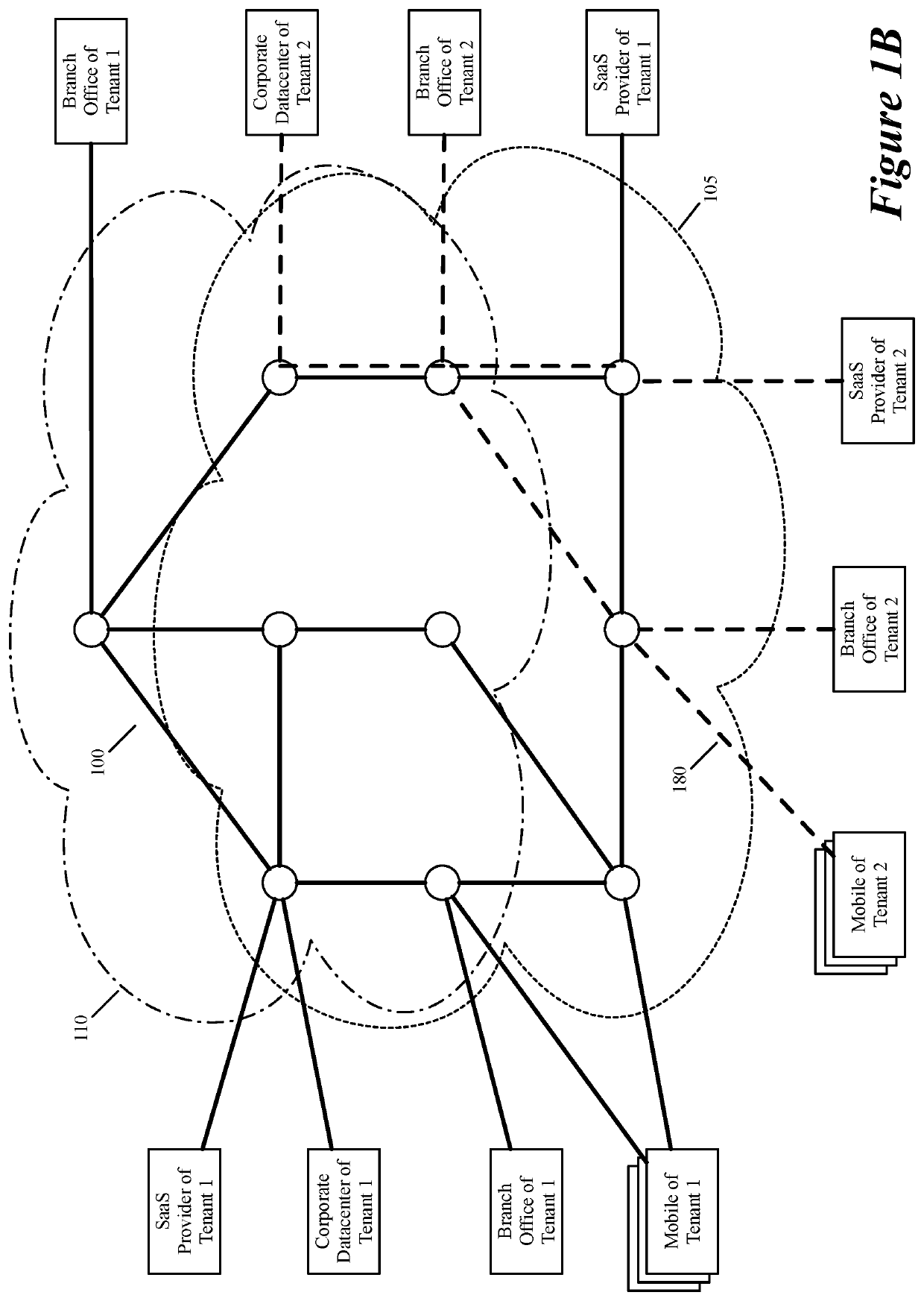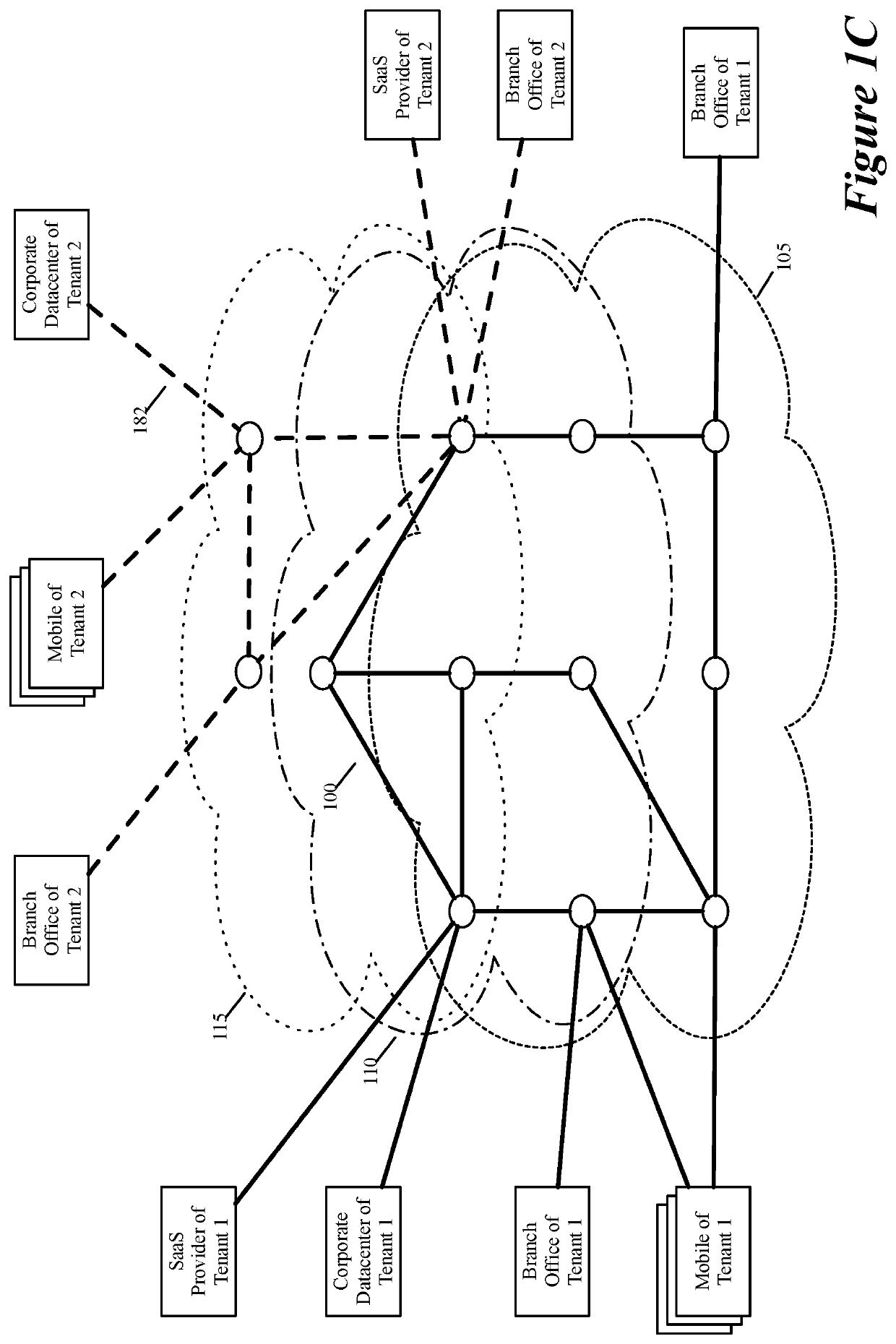Layer four optimization for a virtual network defined over public cloud
a virtual network and public cloud technology, applied in the direction of data switching networks, data switching by path configuration, digital transmission, etc., can solve the problems of large corporate traffic, lack of reliability, qos (quality of service) guarantees and security expected by critical business applications, and the internet itself is a poor medium for business traffic, etc., to achieve improved performance for small flows, improve download times, and low loss rate
- Summary
- Abstract
- Description
- Claims
- Application Information
AI Technical Summary
Benefits of technology
Problems solved by technology
Method used
Image
Examples
Embodiment Construction
[0065]In the following detailed description of the invention, numerous details, examples, and embodiments of the invention are set forth and described. However, it will be clear and apparent to one skilled in the art that the invention is not limited to the embodiments set forth and that the invention may be practiced without some of the specific details and examples discussed.
[0066]Some embodiments establish for an entity a virtual network over several public cloud datacenters of one or more public cloud providers in one or more regions (e.g., several cities, states, countries, etc.). An example of an entity for which such a virtual network can be established include a business entity (e.g., a corporation), a non-profit entity (e.g., a hospital, a research organization, etc.), and an educational entity (e.g., a university, a college, etc.), or any other type of entity. Examples of public cloud providers include Amazon Web Services (AWS), Google Cloud Platform (GCP), Microsoft Azure...
PUM
 Login to View More
Login to View More Abstract
Description
Claims
Application Information
 Login to View More
Login to View More - R&D
- Intellectual Property
- Life Sciences
- Materials
- Tech Scout
- Unparalleled Data Quality
- Higher Quality Content
- 60% Fewer Hallucinations
Browse by: Latest US Patents, China's latest patents, Technical Efficacy Thesaurus, Application Domain, Technology Topic, Popular Technical Reports.
© 2025 PatSnap. All rights reserved.Legal|Privacy policy|Modern Slavery Act Transparency Statement|Sitemap|About US| Contact US: help@patsnap.com



